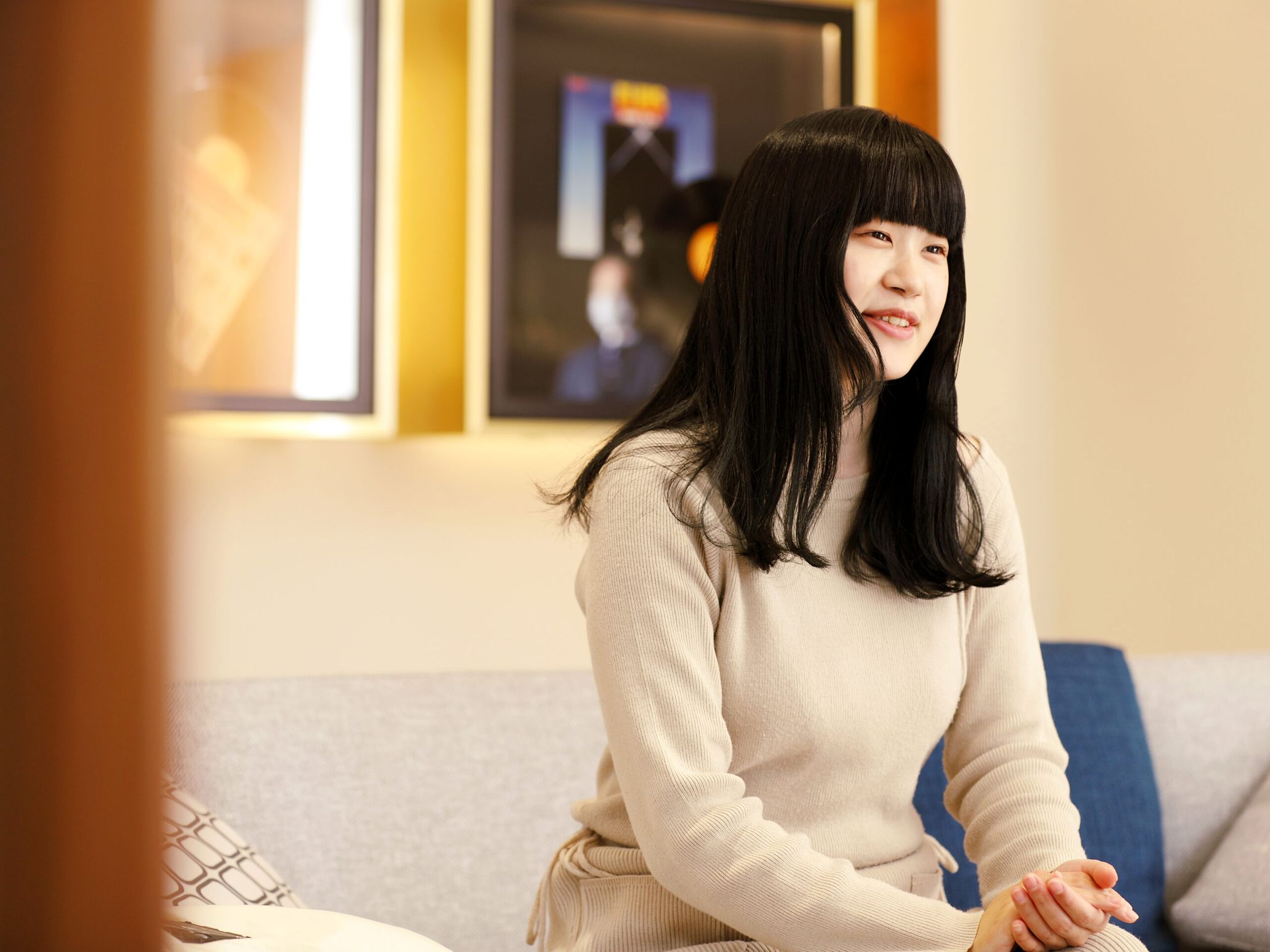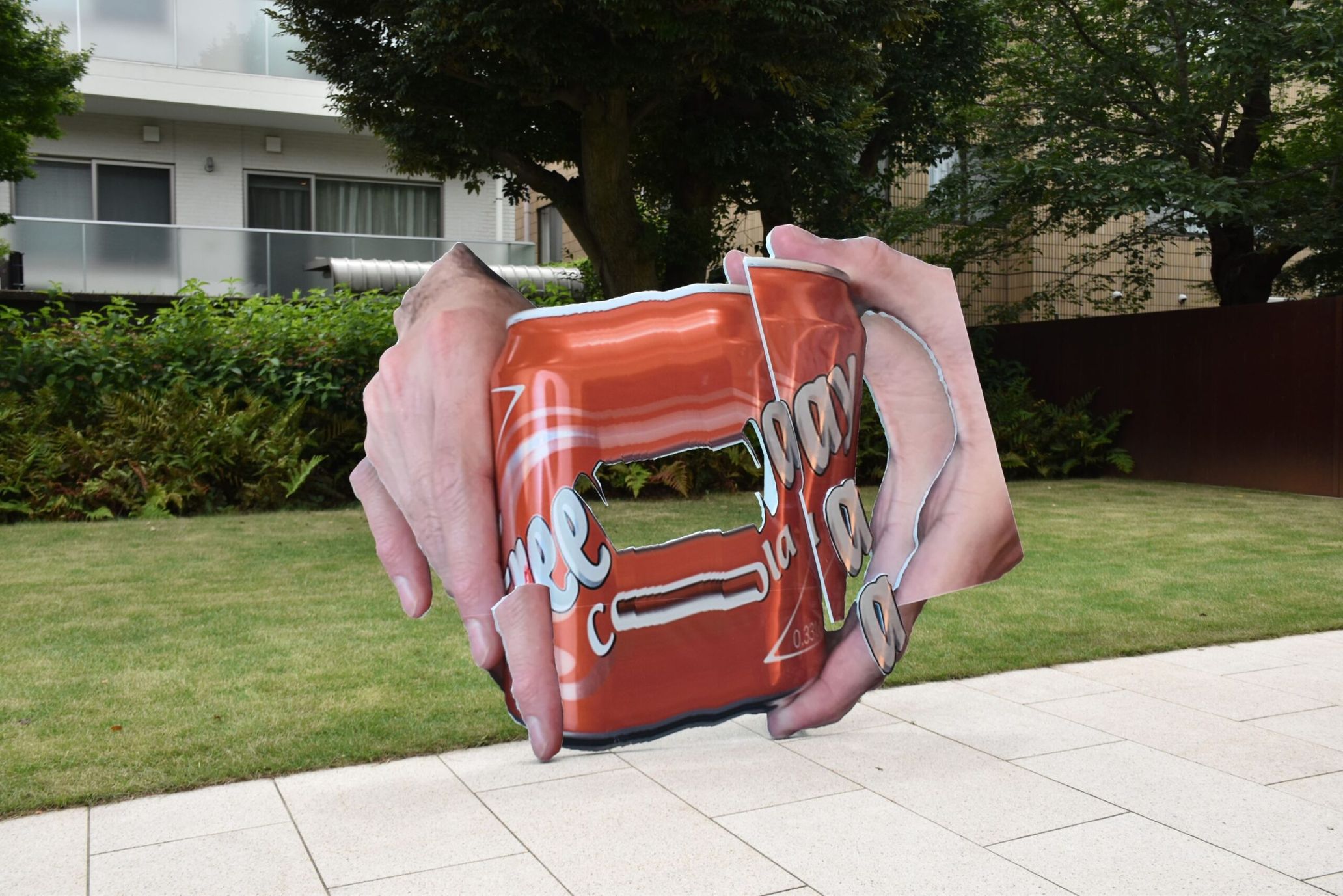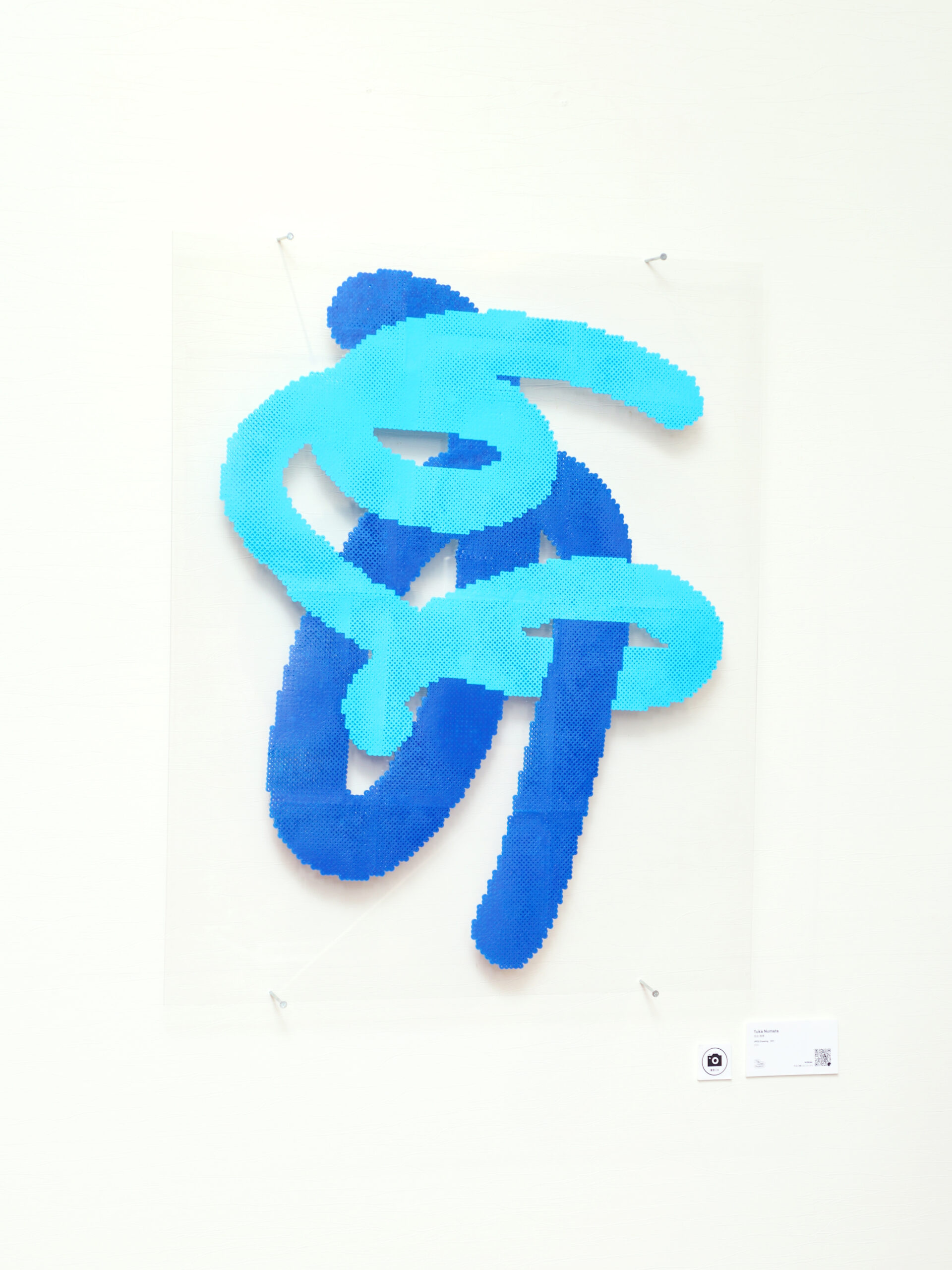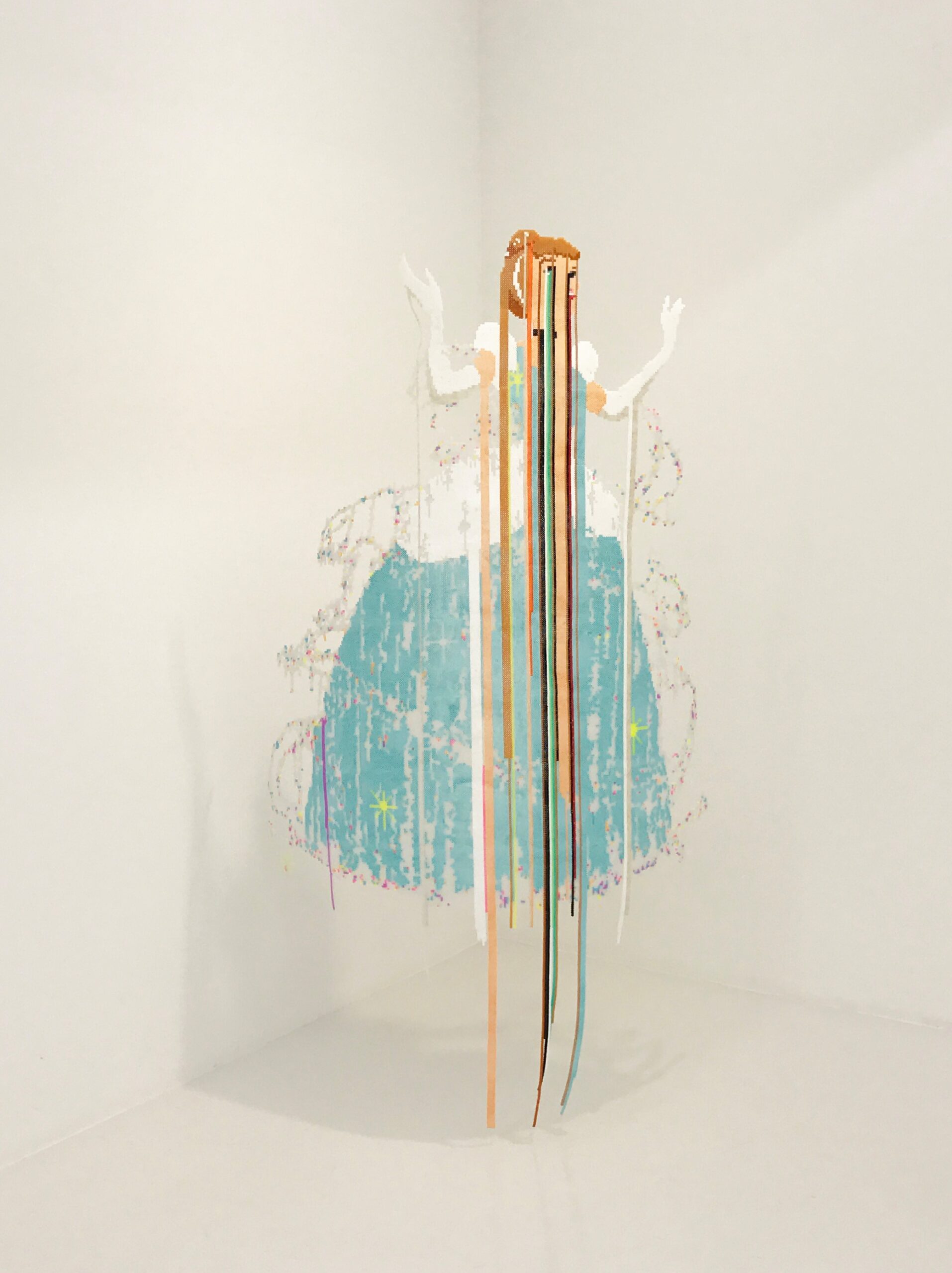The German luxury accessory brand, Montblanc has collaborated with The Chain Museum—an art curator that also operates the artists-support app service named ArtSticker—and launched an exhibition project from March 2020, where works of young artists are displayed at the Montblanc Ginza flagship store.
For the third exhibition, they are showcasing Yuka Numata’s artworks (scheduled) until mid April. Currently, Numata is studying for a master’s degree at the Tokyo University of Arts; and creates arts imbued with her ideas of the possibility of ‘bug’ occurring in the real world, as the VR and animation games further evolve, and the borderline between real life and virtual world becomes vague. Her sensitivity is not of the ‘digital native’ and rather of a generation that experienced the shift from analogue to digital, and her works mirror the daunting scene of that transition. In this interview, I asked Numata about her career and thoughts etched in her current works.
――What made you become interested in art and designing?
Yuka Numata: I was focusing more on science halfway through high school and got bored of it in sophomore year—that’s when I wanted to try something different. One day, I was casually looking at my cell phone ‘MEDIASKIN’ and that’s when I thought that I wanted to make a design that would spark joy in people’s hearts like this phone did to me. Nowadays, everyone has the same smartphones, but back in the day, there were so many different kinds of flip phones—there were ones that slide open and ones that were foldable; and phone designs were part of people’s wardrobe to express themselves. Back then, I wanted to be a product designer.
――When did you start crafting?
Numata: When I got into prep school, I studied at the design course, but as I’m not good with small tasks, my teacher broached to me, “Regarding the university entrance exam, it’s less likely that you would pass with the design course.” Then she encouraged me to switch to the oil painting course—but as I started seeing various artworks at museums, I began discovering different ‘worlds of art’ that were different from my ideas of product designing.
When I got into university, I started drawing oil paintings a bit, and as far as I remember, I think I began making 3D artworks, like the ones I make now, from after my trip to New York. I visited multiple galleries in New York and saw so many contemporary arts—they awed me like, “Oh so this is art.” I was moved by those artworks that not only found the right materials to interpret their concepts, but how they showcased new values without losing the intrinsic roots of their cultures.
Leaving the ‘Discomfort’ born in the abyss between virtual reality and real world
――You pursue the border between real world and virtual reality through your works. But as you mentioned the word ‘flip phones’ earlier, I believe the people born in the early ‘90s aren’t all ‘digital natives.’ Back then, I don’t think all young kids or middle schoolers and high schoolers got to play in the virtual world and it pretty much depended on the home environment. So, when did you start feeling the erosion of the real world by the VR, and ambiguity of the borderline between these two?
Numata: I only used my phone to call my parents, but because I had after school activities, I’ve had a cell phone since I was in elementary school. Later, when I bought an iPhone when it first came out in Japan, I created a Twitter account although no one around me was had it. Also, when Instagram launched its service, I immediately made an account. I was not using these apps at all in the beginning, but when everyone started owning a smart phone and as I witnessed social media spreading through the world, I started heeding the relation between reality and virtual reality.
――So, as humans began to possess the modern tools IRL, you witnessed the virtual world pervading our lives—What made you start reflecting that into your artworks?
Numata: Artworks based on VR or game-related ideas are ubiquitous in the current art scene, and at exhibitions, placing a monitor in the room occupied with sculptures and paintings is becoming a normal thing. I think games are especially the closest gateway to experience virtual world, and new technologies like that are carried on to the future by becoming a part of our current lives—so, it makes sense for me to transmute them into art.
――Do you normally play games yourself?
Numata: Not avidly, but when I went to school in Vienna, I started online gaming with my friends in Japan. When the internet connection is slow, in-game bugs occur, which is a trouble that never happens IRL; and as I zoom out of the situation, I find myself wondering, “Which world am I in now?” My friends and myself are IRL, but we’re communicating through VR—I was amused by that situation. And I believe, the further development of technologies of converting the data created with 2D—including VR and projection mapping—into 3D, could cause bugs in IRL as the ones seen in games. But I get that confusion of ‘which-world-am-I-in?’ because I am from the analogue generation; and people who are born in the world where the real world is eroded by the VR, would not feel odd about the world with the seamless border between IRL and VR.
――So, you’re saying that the transition is happening.
Numata: To be honest, I’m indifferent about the generation changing, but fundamentally, I want to leave works portraying the ‘discomfort’ that I’m feeling in the current generation. By doing so, I hope I can leave something behind for people in the future to acknowledge our epoch and culture.
――Also, you convey the ‘discrepancies’ occurred through information exchange.
Numata: The chain of information you see online could end up being fake news, but the same thing happens among humans, too. When I lived in Vienna, my friend recommended this drink saying, “It’s cheap and tastes exactly like Coke,” but I actually didn’t know the taste of Coke. Although I understood what my friend meant, I couldn’t relate 100% to the idea. That’s when I thought it would be interesting to portray that ‘discrepancy of information,’ and I made a visual art using the picture of the drink that my friend recommended me, to describe the ‘bug’ that may occur in real life causing the ‘discrepancy of information.’
Digital themes and analogue materials
JPEG Drawing 002
JPEG Drawing 003
Photography Yuji Sato
――The theme of your current exhibition is ‘Sampling Theorem’—which by the way is a complex term. The exhibited artworks are depicting the pixels that construct the images displayed on computer monitors or other devices, and the title of your artworks is “JPEG Drawing 001~005.”
Numata: Things that are displayed on monitors are usually rendered with pixels, and resolution refers to the number of pixels in an image. I came up with the idea of turning these pixels into 3D, in order for the viewers to notice that the artwork is describing things that are 2D or displayed on monitors. I shared that idea to the curator, and we came up with the title, Sampling Theorem.
――It’s interesting how you’re using the nostalgic iron beads for your artworks.
Numata: The first time I used iron beads was in my third year of university. Back then, I used it for a completely different concept, when I was trying to make a 3D art of the 2D anime character. I found the iron beads randomly at the toy section in Big Camera. I thought that the pixel art rendered with iron beads would match the image of an old anime.
――Iron beads are perfect for pixel art but also to create a 3D art of something that is essentially 2D.
Numata: But also—you would know if you’ve used iron beads before—putting the beads together is a time-consuming process. When making a big artwork, I prepare couple plates in the beginning, and start from connecting them together. It’s also hard to iron these beads together. You see, as many people know about iron beads, I thought that they would also understand the arduous effort required to make these pixel arts and be able to picture the hand moves of an analogue human. I wanted to depict the border between 2D and 3D by showing that these artworks are made by hand, like paintings with visible brush strokes.
What it means to ‘appreciate art’
――Showcasing your art in a store instead of a gallery is a great way for your works to be seen by a wider audience—what do you think is the benefit of ‘appreciating art’?
Numata: With contemporary art, I think it’s important to experience ‘seeing’ the arts with your own eyes. When I visited modern museums during my trip in New York, I didn’t understand anything as I couldn’t read the art labels in english—however, after going through a lot, I can only understand in retrospect about the arts I saw in New York, that there are moments where I suddenly notice the meaning of those artworks and be like: “That’s what it’s conveying!” Also, as I dig deeper, those arts are portraying things surrounding me, and I can learn a lot about the American culture and history of the periods of these arts, and feel the flow of time. Art can transcend language and communication.
My friends from high school and friends who are not associated with art came to check out my current exhibition, and I was so glad to hear them say, “I’ve never seen contemporary artworks before” or “This is cool.” Not that I have a specific desire of how I want people to see my works, but I would be happy if people could casually reflect back on my works later in life and think, “How nostalgic” or “Now I understand what it meant.” More importantly, I think art isn’t just an entertainment, it’s an experience.
――What are the things you would like to challenge in the future?
Numata: In the past, when I exhibited my works abroad, I received different comments from what I would earn in Japan. I learned a lot from the experience, so I would like to do an exhibition outside of Japan again.
Yuka Numata
Born in 1992, in Chiba. She currently studies at Tokyo Art University, and is majored in Fine Art, Paining. From 2019 to 2020, she was chosen for Ishibashi Foundation scholarship and flew to Vienna to study at the Academy of Fine Arts Vienna.Currently, she is strenuously creating artworks that convey the misunderstandings that occur from easy access to information, in various art forms from installation arts, paintings, and photography. In 2018, her works were showcased in SHIBUYA STYLE Vo.12, which was held at the art space of Seibu Shibuya. In the following year of 2019, she won the Grand Prize at A-TOM ART AWARD 2019.
https://artsticker.app/share/events/detail/388
■Sampling Theorem
Date: January 14, 2021 – (scheduled) mid April, 2021
Location: Montblanc Ginza Flagship store
Address: 7-9-11 Ginza Chuo-ku, Tokyo
Open hours: 11AM – 8PM
Entrance fee: Free







